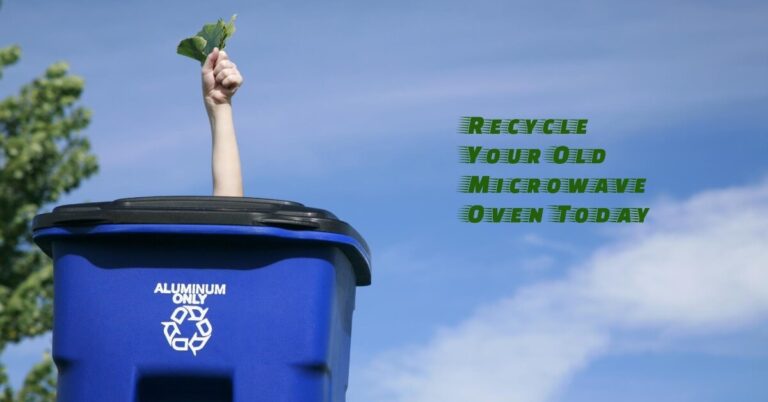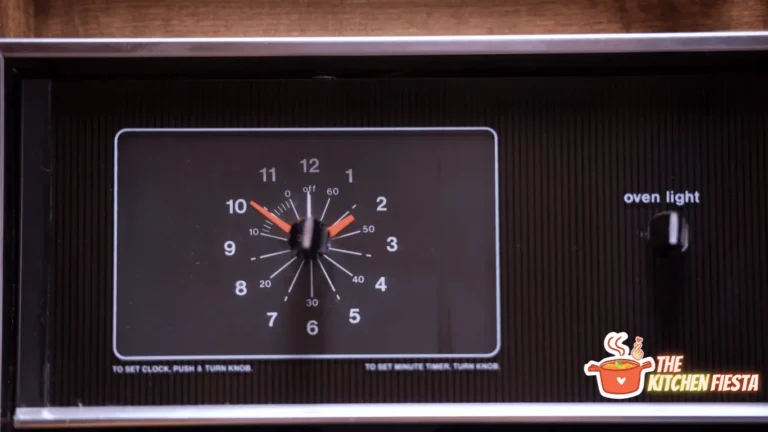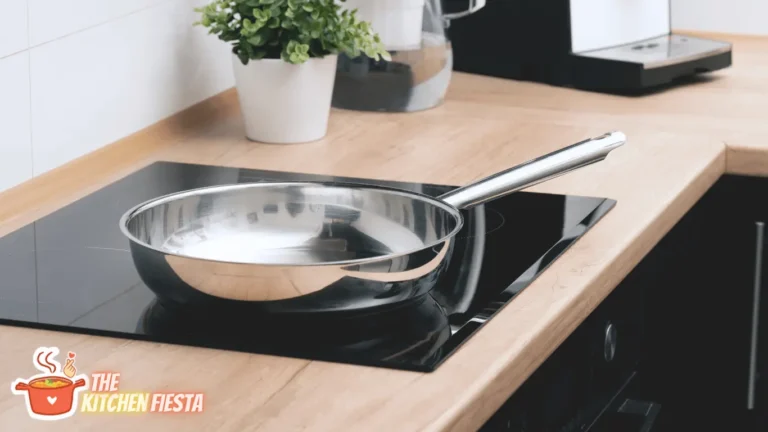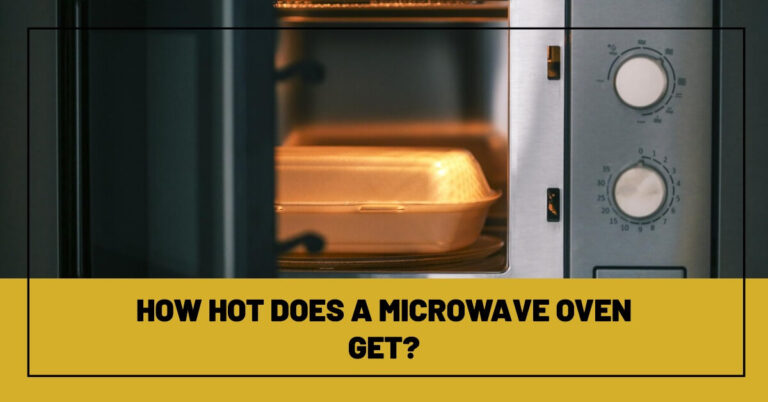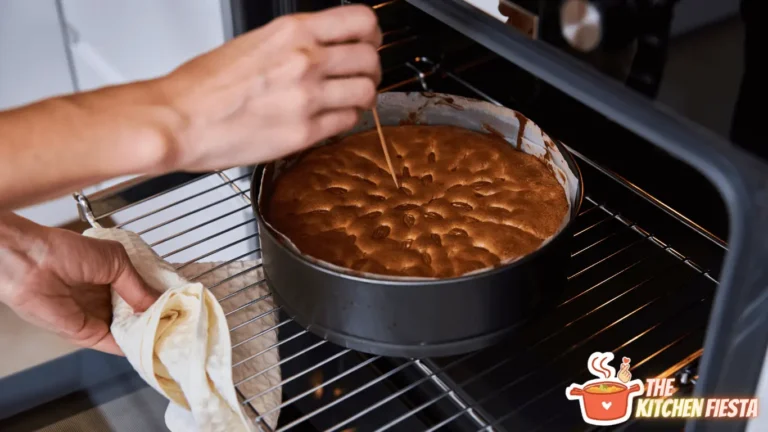What to Do With an Old Microwave Oven? Safe and Proper Disposal Methods
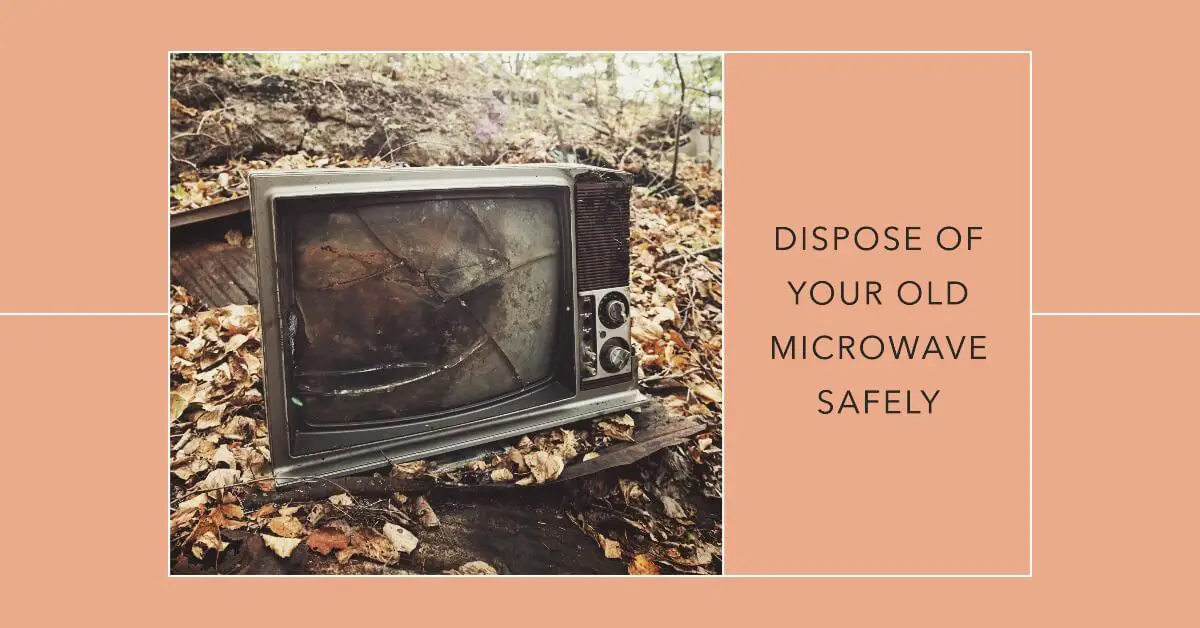
Do you have an old microwave oven that no longer works or has seen better days? Figuring out how to properly dispose of your old microwave can be confusing. This comprehensive guide will walk you through all the options for getting rid of a microwave in an eco-friendly way.
Microwaves have become a staple appliance in most kitchens, providing a quick and convenient way to heat up food. However, like most electronics, they don’t last forever. If your microwave oven stops heating food properly or the broken microwave door won’t stay closed, it’s probably time to start thinking about how to recycle or dispose of it.
But you can’t just put your old microwave or microwave oven in the trash. Why? Microwaves contain potentially hazardous materials that require special handling when discarded.
So what should you do with an old microwave? The good news is there are several responsible and eco-friendly options for microwave disposal or recycling your old microwave oven. This guide will outline the pros and cons of various methods for getting rid of a microwave while minimizing environmental impact.
Assessing if Your Old Microwave Can Be Repaired
Before deciding how to discard your old microwave oven, first determine if it can be repaired. If the microwave is less than 5 years old and basic functions like heating, turntable rotation, and interior light still work, it may just need new parts.
Consider contacting a local appliance repair shop to diagnose the issue. Replacing inexpensive parts like door latches, interior lights, and turntable motors can give a microwave oven several more years of life.
If the major components like the magnetron or transformer in your old microwave need repair, it likely makes more sense to replace the entire unit. But for minor fixes, repairing an appliance is cheaper than buying a new one and keeps the old microwave out of a landfill.
Donating or Selling Your Used Microwave
If your microwave still works but you’re just looking to upgrade, consider donating or selling it so someone else can get use out of your old appliance.
Many charities and secondhand stores accept donated small kitchen appliances like microwaves. Call nearby locations to see if they want your gently used microwave that’s still in good working order.
You can also post the microwave for sale on Facebook Marketplace, Craigslist, or Nextdoor. Clearly state the microwave brand, model, age, and condition. Take photos of the interior and exterior to show it’s clean and damage-free.
Selling an old microwave that’s still functional lets you recoup a little bit of money to put toward a new model. And it keeps your used microwave circulating rather than tossed out.
Finding an E-Waste Recycling Center for Microwave Disposal
If your old microwave oven is broken beyond repair, the most eco-friendly option is to recycle it through an e-waste recycling program.
Many municipalities have e-waste recycling centers that accept old or broken microwaves and other household appliances and electronics. Contact your local recycling department to ask if they will take microwaves.
You can also search online for independently run e-waste recycling centers in your state or region. Make sure to verify that they accept old microwaves specifically before dropping one off.
E-waste recycling allows salvageable materials like copper wiring and steel to be reclaimed from your discarded microwave. Metals can be melted down and used in new products. Hard plastics and glass can also be broken down and recycled.
Dangers of Putting a Whole Microwave in the Trash
While it may be tempting just to include your defunct microwave oven in your regular household trash pickup, this is ill-advised and potentially hazardous.
Microwaves contain components and materials that make them unsuitable for a landfill. This includes:
- Capacitors – These contain chemicals that can leak if damaged.
- Mercury switches – Trace amounts of mercury require special handling.
- Magnetron – Produces radiation and contains beryllium oxide.
- Coolant and lubricant oils – Harmful to the environment if leaked.
Putting your entire microwave in the trash also represents a huge waste since most parts like steel, wiring, and glass could be recycled.
Check your local waste disposal regulations. Many municipalities prohibit disposal of electronics like microwaves in landfill-bound household trash.
Removing Hazardous Parts Before Recycling a Microwave
If no hazardous waste collection programs exist in your area, you can remove some toxic components yourself before recycling your old microwave oven.
This will make it safer to include the gutted microwave body in normal trash. However, this is still less than ideal since it prevents salvaging many recyclable parts.
To help prep a defunct microwave for recycling:
- Remove the door – This will ensure children can’t accidentally get trapped inside later.
- Take out the turntable plate – This lets you access internal parts.
- Disconnect all wiring – Cutting wiring makes components safe for handling.
- Take out the capacitor, switches and magnetron – These parts need special ewaste recycling.
Again, this should be seen as a last resort option compared to proper microwave recycling. Removing capacitors requires electrical skill to avoid being shocked. And you still won’t recover recyclable steel, plastic and glass.
Repurposing an Old Microwave Oven
If you or someone you know has DIY skills, consider repurposing parts of your discarded microwave instead of immediately recycling it.
Removing usable parts from an old microwave gives them a second life. The sturdy turntable plate alone has many uses:
- Rotating display stand
- Seed starter tray
- Pet food bowl platform
- Garage or shed storage shelf
Other specific microwave parts that can be creatively reused include:
- Door as picture frame or whiteboard
- Interior light for other projects
- Glass tray for organizing toiletries
- Button pad to make touch lamp
YouTube has many tutorials on repurposing microwave components in creative ways. This helps reduce waste and stop useful items from entering landfills.
Having an Appliance Repair Shop Dismantle Your Microwave
Rather than dismantling your broken microwave yourself, appliance repair shops can safely remove recyclable components and prep it for disposal.
Contact a local appliance repair shop to see if they offer this service. They have the expertise to remove capacitors, wiring, and other usable parts faster than a DIY attempt.
The shop can harvest copper and other metals to resell. You may even get a small refund for the value of salvaged microwave parts. This also allows safer disposal of the remaining cabinetry since toxins have been removed.
Getting Money Back for Your Old Microwave
Some municipalities and private companies will actually pay you to recycle your old microwave oven. They provide this cash incentive to encourage responsible e-waste recycling.
Inquire with your city’s electronic waste management program to see if they offer rewards for recycling microwaves and other electronics. My city pays $10-$20 per appliance depending on size.
Additionally, retailers like Best Buy accept old microwaves to be recycled and offer a gift card in exchange.
You can also get quotes from eco-friendly companies like Eco-Cycle that will safely dispose of and recycle electronics in compliance with laws. They may pay for certain models and makes where they can resell working parts.
Regulations and Laws Around Microwave Disposal
Getting rid of a microwave oven responsibly means following federal and local disposal regulations. Key national policies include:
- The Resource Conservation and Recovery Act – Covers management of hazardous electronic waste. States must comply.
- The Electronic Waste Recycling Act – Makes it illegal to dispose of e-waste like microwaves in non-approved landfills.
Many states, counties and cities have additional laws regarding recycling and disposal of old appliances like microwaves. Some key requirements may include:
- Mandatory disposal fees for certain electronics.
- Required recycling of a certain percentage of e-waste.
- Bans on putting microwaves in landfill trash.
- Required removal of toxins like PCBs before disposal.
Check your local environmental agency’s website for appliance and microwave disposal laws applicable to residents. Following proper procedures avoids heavy fines.
Steps for Safely and Properly Disposing of an Old Microwave
When you’re ready to get rid of your old microwave oven, use this checklist to ensure safe, legal and eco-friendly disposal:
- Remove trays, turntable plate and other accessories.
- Make sure the microwave is unplugged.
- Call your local recycling program to see if they accept microwaves. If so:
- Check if they require doors to be removed before drop-off.
- Ask if there are disposal fees to cover and if cash/check/card is accepted.
- Note the recycling center address and hours of operation.
- If your area lacks a microwave recycling program:
- Research nearby household hazardous waste collection events.
- Find retailers that accept microwaves like Best Buy.
- Search for mail-in microwave recycling services.
- Transport the microwave securely so it doesn’t tip and spill hazardous materials.
- Drop off the microwave at the verified recycling/disposal location.
- Get documentation from the recycling center showing microwave was received if required.
Taking these steps minimizes risk of environmental contamination from improper microwave disposal while keeping recyclable materials out of landfills.
Transporting an Old Microwave Safely
When taking your discarded microwave to a recycling drop-off point, special care must be taken during loading and transportation.
- Remove the glass turntable tray – This prevents breakage.
- Pad the inside with blankets – Cushion components to prevent damage.
- Secure the microwave – Use rope or straps so it can’t shift or tip.
- Drive slowly and take corners gently – Sudden stops or jolts can dislodge parts.
- Park in a designated safe loading zone – Don’t block traffic flow.
- If using a pickup truck, cover and tie down the appliance – Prevent water and wind damage.
Safe transportation protects both you and the environment from accidental contamination during the journey to the recycling center.
Why Proper Microwave Disposal is Eco-Friendly?
It’s important not just for safety but for environmental reasons to responsibly recycle your unwanted microwave oven.
When you drop off your old microwave at a certified e-waste recycling location, here’s what happens:
- Metal components like wiring and the outer case can be melted down and made into new products.
- Glass parts like the turntable and door window can be grounded up and reformed into new glass items.
- Plastics are shredded and used as filler in manufacturing processes.
- Toxins are safely collected and disposed of.
- Minimal waste goes into landfills.
Recycling your old microwave keeps valuable resources in use and prevents more mining and harvesting of raw materials. It also eliminates greenhouse gas emissions that would result from manufacturing new metals and plastics.
So by taking a few simple steps to correctly get rid of your unwanted microwave oven, you help minimize your environmental footprint.
Options for Microwave Disposal If No Local Recycling
What if there are no convenient microwave recycling services near where you live? You still have responsible options to safely dispose of your old microwave oven.
- Ask major retailers like Home Depot and Best Buy if they accept appliance recycling, even if not advertised.
- Search for companies that provide mail-in recycling kits to package up the microwave.
- Save for a hazardous waste collection event which should accept microwaves.
- Consider an appliance recycling depot in a nearby larger city.
- Look for recyclers that provide rugged drop-off bins to fill and leave curbside.
- Donate to an organization like Habitat for Humanity that removes parts before scrapping.
While these may be less convenient, they ensure your unwanted microwave doesn’t end up contaminating local landfills. The extra effort protects the planet.
Creative Ways to Reuse an Old Microwave
Rather than disposing of your old microwave, why not reuse it? With some DIY skills and creativity, that retired appliance can take on a whole new life!
Some fun ways to convert old microwaves into something useful include:
- Make a food smoker – Remove innards and insert smoke box.
- Create a drying box – Perfect for delicate herbs and flowers.
- Build a pyrolysis chamber – Safely dispose of organic waste.
- Fashion a Faraday cage – Block electromagnetic fields for experiments.
- Cast microwave in concrete – Make funky planters and yard art.
- Turn into a hidden safe – Conceal valuables behind the metal case.
Breathing new life into a broken microwave saves resources and stops additional waste from entering landfills. Get creative with how you can upcycle rather than dispose of an old microwave oven!
Buying New vs Repairing an Old Microwave
If your microwave stops heating properly, should you repair or replace it? Consider the costs and benefits of these options.
Buying a new microwave oven makes sense if yours is over 10 years old or needs major fixes. Newer models are more energy efficient and have useful features. But manufacturing new appliances has environmental costs.
Repairing some microwave problems like touchpad controls or interior lights is inexpensive. Simple part replacements can extend a microwave’s life by years. Appliance repair also employs local skilled workers.
But for major component issues like the magnetron, repairs might approach replacement cost. In those cases, purchasing a new efficient microwave can be the better investment.
Think about your microwave’s age, required repairs, energy use, and available budget. Then decide whether replacement or repair is the more responsible option long-term.
What Happens to Microwaves at Recycling Centers?
Wondering what the actual microwave recycling process entails? At certified e-waste recycling centers, that old appliance goes through multiple steps to safely recover recyclable materials.
- Microwaves are weighed since some facilities charge by poundage.
- Any shelves, turntables and accessories are detached.
- Hazardous coolant and oils are drained into separate containers to be disposed of properly.
- Magnets and switches containing regulated materials are carefully removed.
- Technicians disconnect and cut out all wiring since copper is valuable.
- The outer case is unscrewed so internal metal framework can be accessed.
- Steel and other metals are stripped off for shredding and melting down.
- Any glass components like the door are smashed and sorted.
- Remaining plastic pieces are granulated or melted based on type.
- Leftover wood, insulation and parts are incinerated or compacted.
This meticulous dismantling process maximizes the raw materials recovered from your old microwave. The goal is to recycle and reuse as many parts as possible while safely disposing of hazardous components.
Conclusion: Key Tips for Microwave Disposal
When your trusty old microwave dies, make sure to responsibly recycle rather than trash it. Keep these tips in mind:
- Check if it can be affordably repaired before assuming disposal is needed.
- Call your local municipal recycling program to find drop-off locations for old microwaves.
- Remove shelves and accessories but don’t attempt to dismantle it yourself unless trained.
- Find retailers, charities and mail-in services that accept microwaves for recycling if your area lacks convenient options.
- Follow local regulations – throwing a microwave in the trash may carry hefty fines.
- Safely transport your unwanted microwave to prevent hazardous spills.
- Consider creative ways to reuse your old microwave if still functioning.
Responsibly disposing of electronics like broken microwave ovens takes a little extra effort. But keeping toxic components out of landfills and giving materials another life cycle is well worth it. Just follow these tips when deciding what to do with your obsolete microwave. The environment will thank you!


